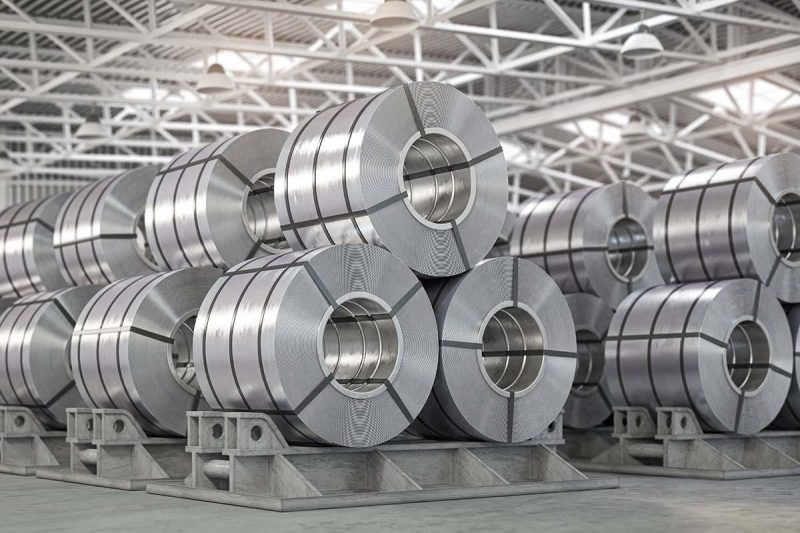Nickel is a high-luster, silver-white base metal whose valuable applications have made it a significant and widely used material in the world today. But where does it come from? And what exactly are those valuable applications?
For investors interested in the nickel market, it’s important to have answers to those questions. After all, a solid understanding of dynamics in the space is key for making sound — and profitable — investment decisions.
The space is becoming especially interesting as demand dynamics change. While stainless steel still accounts for about 70 percent of nickel use, nickel is also widely used in the lithium-ion batteries that power electric vehicles (EVs).
If you’re interested in getting started on nickel investing, here’s a brief overview of the nickel industry, including where it’s found, what it’s used for and which countries use it the most.
What factors impact nickel supply?
Nickel ore exists in the Earth’s crust in two main deposit types: laterite and sulfide. According to the US Geological Survey’s most recent report on nickel, identified land-based resources averaging 0.5 percent nickel or more contain at least 300 million metric tons (MT) of nickel; of that amount, around 60 percent is in laterite deposits and 40 percent is in sulfide deposits.
Each deposit type presents unique challenges to nickel mining. Sulfide deposits are found very deep in the crust, making extraction difficult. They also tend to be smaller than laterite deposits and often have variable grades. The US Geological Survey notes that the discovery of sulfide deposits has long been on the decline, leading exploration companies to search in trickier locations such as East-Central Africa and the subarctic.
In contrast, laterite deposits are near the surface and thus are conducive to open-pit mining. They also offer more consistent grades and are usually larger than sulfide deposits. However, a potential downside to laterite deposits is that ore extraction involves leaching with acids at high temperatures.
In 2022, the world’s top nickel producers were Indonesia, the Philippines, Russia and New Caledonia. Indonesia produced 1.6 million MT of the metal, the Philippines generated 330,000 MT, Russia’s output totaled 220,000 MT and New Caledonia contributed 190,000 MT. Norilsk Nickel, Glencore (LSE:GLEN,OTC Pink:GLCNF) and Vale (NYSE:VALE) are some of the world’s largest nickel companies.
Indonesia’s production has exploded in recent years. In 2017, it was second to the Philippines with output of 345,000 MT. This number jumped to 853,000 MT just two years later and first passed 1 million in 2021.
However, this massive increase in supply comes with caveats — Indonesia banned the export of nickel ore in 2020, and now a sprawling nickel-processing industry largely run by Chinese companies has sprung up to target the EV market. Additionally, much of Indonesia’s nickel is in the form of either class II nickel or nickel products, not London Metal Exchange (LME) deliverable class I refined nickel, according to the International Nickel Study Group.
What factors impact nickel demand?
Once extracted, nickel ore is primarily used as a refined metal; as mentioned, more than two-thirds of the global market is put towards the production of stainless steel. The aerospace industry prizes refined nickel for its resistance to corrosion and uses it in spades as a component of superalloys. The metal is also used in coins, catalysts and chemicals, foundry products and plating.
As stainless steel is the largest source of demand for nickel, increasing nickel consumption is often fueled by developing countries in the midst of infrastructure expansions. Indeed, since the early 1990s, the nickel price has seen steep climbs and descents due to changes in economic growth.
For instance, the collapse of the Eastern Bloc led to significant nickel oversupply and a plummet in the metal’s price that was not corrected until the early years of the 21st century. Nickel peaked at US$54,050 per MT in May 2007 after the market registered a deficit of 44,000 MT the previous year. In 2022, a short squeeze drove LME prices above US$100,000, but the exchange suspended trading and cancelled trades.
Nickel prices have become increasingly affected by the metal’s use in EV battery cathodes as the world seeks to reduce carbon emissions in the battle against climate change. Global demand for the metal from the EV battery industry is expected to increase more than 40-fold by 2040, according to the International Energy Agency.
What are the ways to invest in nickel?
There are four ways to gain exposure to the nickel industry: exchange-traded products (ETPs), futures, physical metal and stocks.
Nickel is included in many broad-based metals ETPs, including the Invesco DB Base Metals Fund (ARCA:DBB) and the iPath Series B Bloomberg Industrial Metals Subindex Total Return ETN (ARCA:JJM). These products offer exposure to baskets of metals, including copper, zinc and aluminum. For those seeking targeted exposure to nickel, the iPath Bloomberg Nickel Subindex Total Return ETN (ARCA:JJN) may be an interesting choice; this product is linked to an index of nickel futures.
Nickel futures themselves trade on the LME under the symbol NI. These nickel futures contracts represent 6 MT of nickel and are priced in US dollars per MT. Clearable currencies include the US dollar, yen, pound and euro.
Getting direct exposure by buying physical metal and holding it may be tempting, but it’s worth noting that storing nickel of any material value would likely be challenging.
Finally, investors can buy shares of companies engaged in nickel production, discovery and extraction. Some major nickel miners trading on the TSX include First Quantum Minerals (TSX:FM,OTC Pink:FQVLF), Lundin Mining (TSX:LUN,OTC Pink:LUNMF) and Hudbay Minerals (TSX:HBM,NYSE:HBM), and there are many TSXV-listed junior companies exploring for the base metal around the world.
Securities Disclosure: I, Melissa Pistilli, hold no direct investment interest in any company mentioned in this article.

